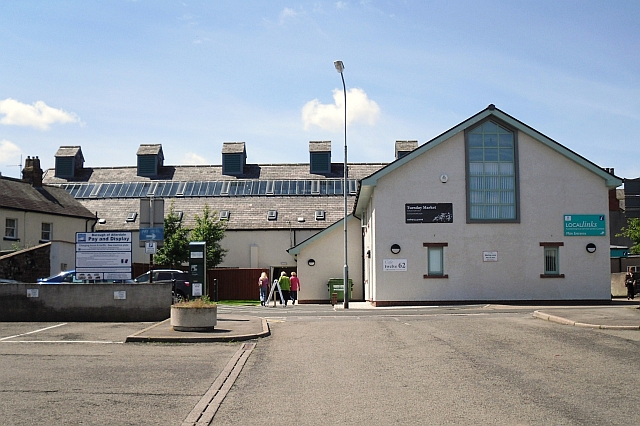|
Brackenthwaite, Buttermere
Brackenthwaite is a hamlet in the parish of Buttermere, in the Cumberland district of Cumbria, England. It is situated some south of Cockermouth. It lies within the Lake District National Park. History The name is recorded as ''Bracanethuaite'' in the 12th century. It derives from the Old Norse ''brakni'' 'bush' and ''thveit'' 'assart' (cf. thwaite) like Bregentved (Denmark) and Bracquetuit (Normandy) (cf. Thuit). Brackenthwaite was historically a township in the ancient parish of Brigham. The parish of Brigham was large, and its four south-eastern townships of Brackenthwaite, Buttermere, Lorton and Wythop were served by a chapel of ease at Lorton. The township of Brackenthwaite took on civil functions under the poor laws from the 17th century onwards. As such, the township also became a civil parish in 1866, when the legal definition of 'parish' was changed to be the areas used for administering the poor laws. The parish of Brackenthwaite was included in the Cockermout ... [...More Info...] [...Related Items...] OR: [Wikipedia] [Google] [Baidu] |
Wigton
Wigton is a market town in the Cumberland district of Cumbria, England. It lies just outside the Lake District. Wigton is at the centre of the Solway Plain, between the Caldbeck Fells and the Solway coast. It is served by Wigton railway station on the Cumbrian Coast Line, and the A596 road to Workington. The town of Silloth-on-Solway lies to the west, beyond Abbeytown. Etymology Wigton is "Wicga's tūn". "Wicga" is an Old English pre-7th-century personal name meaning "a beetle" (as in "earwig"), while "tūn" is Old English for a demarcated plot, a "homestead" or "village", so Wigton is "the hamlet belonging to Wicga". History Wigton lies on the River Wampool and Wiza Beck (beck being a dialect word meaning "brook" or "stream" – from the Old Norse ''bekkr''). It is an ancient settlement and evolved from a pre-medieval street plan, which can still be traced today. The Romans had a cavalry station, Maglona, known locally as Old Carlisle, just to the south of the town ... [...More Info...] [...Related Items...] OR: [Wikipedia] [Google] [Baidu] |
Ancient Parish
In England, a civil parish is a type of administrative parish used for local government. It is a territorial designation which is the lowest tier of local government. Civil parishes can trace their origin to the ancient system of parishes, which for centuries were the principal unit of secular and religious administration in most of England and Wales. Civil and religious parishes were formally split into two types in the 19th century and are now entirely separate. Civil parishes in their modern form came into being through the Local Government Act 1894 ( 56 & 57 Vict. c. 73), which established elected parish councils to take on the secular functions of the parish vestry. A civil parish can range in size from a sparsely populated rural area with fewer than a hundred inhabitants, to a large town with a population in excess of 100,000. This scope is similar to that of municipalities in continental Europe, such as the communes of France. However, unlike their continental Euro ... [...More Info...] [...Related Items...] OR: [Wikipedia] [Google] [Baidu] |
Villages In Cumbria
A village is a human settlement or community, larger than a hamlet but smaller than a town with a population typically ranging from a few hundred to a few thousand. Although villages are often located in rural areas, the term urban village is also applied to certain urban neighborhoods. Villages are normally permanent, with fixed dwellings; however, transient villages can occur. Further, the dwellings of a village are fairly close to one another, not scattered broadly over the landscape, as a dispersed settlement. In the past, villages were a usual form of community for societies that practice subsistence agriculture and also for some non-agricultural societies. In Great Britain, a hamlet earned the right to be called a village when it built a church.-4; we might wonder whether there's a point at which it's appropriate to talk of the beginnings of French, that is, when it wa ... ''village'', from Latin ''villāticus'', ultimately from Latin ''villa'' (English ''vi ... [...More Info...] [...Related Items...] OR: [Wikipedia] [Google] [Baidu] |
Listed Buildings In Buttermere, Cumbria
Buttermere, Cumbria (village), Buttermere is a civil parish in the Cumberland (unitary authority), Cumberland district of Cumbria, England. It contains eleven Listed building#England and Wales, listed buildings that are recorded in the National Heritage List for England. All the listed buildings are designated at Grade II, the lowest of the three grades, which is applied to "buildings of national importance and special interest". The parish is in the Lake District National Park and contains lakes and fells with the valleys between them. In the valleys are the village of Buttermere, and the settlement of Brackenthwaite, Buttermere Parish, Cumbria, Brackenthwaite; all the listed buildings are in the valleys, most of them in or near the settlements. They consist of farmhouses and farm buildings, houses, and a church. __NOTOC__ Buildings References Citations Sources * * * * * * * * * * * * * {{DEFAULTSORT:Buttermere, Cumbria Lists of listed buildings in Cumbri ... [...More Info...] [...Related Items...] OR: [Wikipedia] [Google] [Baidu] |



